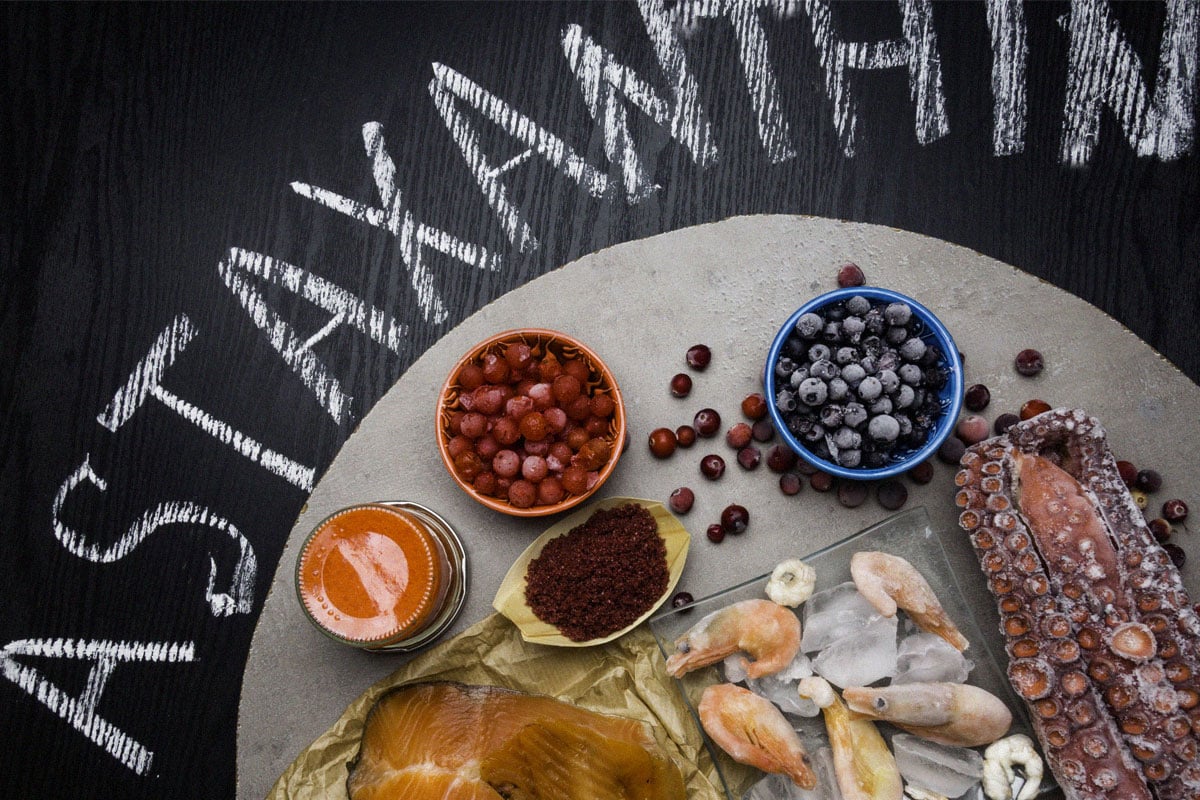One of the nutrients that has moved to the forefront of the nutritional sphere is astaxanthin, a versatile carotenoid that has gained traction as a super-antioxidant. And that’s not just lip service. Astaxanthin has been found to be 10-times more powerful than other carotenoids like beta-carotene, lutein, and zeaxanthin, and about 1000-times more effective than Alpha-tocopheryl acetate, a specific form of vitamin E. And most impressive of all, astaxanthin has proven to be up to 6,000-times more powerful than vitamin C by one very important measure: singlet oxygen quenching activity.
Article At A Glance
Astaxanthin As An Antioxidant
- Astaxanthin has been found to have more antioxidant power than beta-carotene, lutein, zeaxanthin, vitamin E, and vitamin C
- Antioxidants fight oxidative stress by scavenging free radicals that seek to harm your heart, brain, joints, skin, eyes, and stamina
Best Sources For Astaxanthin
- Astaxanthin is responsible for the red-pinkish hue of salmon, red trout, lobster, crab, shrimp, and more
- At your supermarket, the highest natural level of astaxanthin is found in wild Pacific sockeye salmon
Astaxanthin In Krill Oil
- Krill Oil is a great source of astaxanthin, while also containing Omega-3 fatty acids DHA and EPA
- Astaxanthin helps to stabilize DHA and EPA, making it more bioavailable to humans
- In turn, Omega-3 fatty acids deliver benefits to your heart and brain
With numbers like that, it’s no surprise that astaxanthin is one of the most highly prized of the antioxidants, with reported health benefits for your heart, brain, joints, skin, and energy/stamina. Antioxidants deliver physiological benefits to you by quenching singlet oxygen activity, which is an intensely reactive molecule that births free radicals that can damage your body with oxidative stress.
The Best Sources For Astaxanthin
How can you get all the astaxanthin you need in order to reap the benefits? Astaxanthin, like other carotenoids, delivers pigment colors along with support for good health—but astaxanthin has been dubbed the “king of carotenoids,” and as such imbues a vibrant red-pinkish hue to an array of marine life. Astaxanthin even helps salmon to become skillful swimmers, giving the fish the energy they need to swim upstream.
Most of those natural sources of astaxanthin can be found at your local grocery store, including sockeye salmon, red trout, lobster, shrimp, crawfish, crab, salmon roe, and red sea bream. Of those proteins, astaxanthin is found in its highest concentration in wild Pacific sockeye salmon, which contains 26-38 mg of astaxanthin compared to 6-8 mg in farmed Atlantic salmon. The reason for this disparity is that wild marine life consumes the truest form of astaxanthin—microalgae. Whereas farmed fish mainly consume commercially made food additives that contain synthetic astaxanthin.
So clearly the lesson here is to purchase wild salmon when available, especially if you want a more robust dose of astaxanthin. But even if you were to eat exclusively wild salmon, you would need to consume about 6 ounces (165 grams) daily in order to get a 3.6 mg dose of astaxanthin, the amount that studies show you need in order to see any true benefits. Now the question becomes, if salmon isn’t the absolute best source for astaxanthin, what is?
So clearly the lesson here is to purchase wild salmon when available, especially if you want a more robust dose of astaxanthin. But even if you were to eat exclusively wild salmon, you would need to consume about 6 ounces (165 grams) daily in order to get a 3.6 mg dose of astaxanthin, the amount that studies show you need in order to see any true benefits.
The Krill Oil Advantage With Astaxanthin
Found in all of the world’s oceans, krill is one of the planet’s largest biomasses—helping to sustain a diverse array of species in the natural world. One species in particular, the Southern Ocean’s Antarctic krill (Euphausia superba) is especially abundant, with an estimated biomass of 500 million metric tons—making it a super source of energy for other living organisms. And it is this species in particular that finds its way into krill oil nutritional supplements— and thank goodness, because eating a handful of krill every day doesn’t seem feasible or appetizing.
If you’ve ever seen a photo of krill, you’d know that it possesses a bright red hue. This color comes directly from the naturally occurring astaxanthin found in these tiny, shrimp-like creatures. Inside of the Antarctic krill, astaxanthin preserves the omega-3 fatty acids EPA (eicosapentaenoic fatty acid) and DHA (docosahexaenoic fatty acid), both of which have been shown to display anti-inflammatory properties. This makes krill oil a fantastic option in the fight against oxidative stress and inflammation, while improving lipid levels and optimizing blood flow, equating to better health in both the cardiovascular and neurological systems.
In heart health specifically, those omega-3 fatty acids preserved by astaxanthin display a wealth of benefits, with studies showing a potential reduction in the risk of cardiovascular disease, while also potentially providing protection against blood clots and blood vessel inflammation. Meanwhile, krill oil works to manage triglyceride levels. And in one animal study, krill oil displayed the ability to reduce structural and molecular changes in the hearts of rats after a heart attack. In the study, rats supplemented with krill oil showed a reduction in blood markers of inflammation compared to those given fish oil.
And in brain health, DHA and EPA—again, stabilized by astaxanthin—deliver protective benefits. As you age and are naturally hit with cognitive complications, omega-3s take on even more importance. One study demonstrated that EPA and DHA could potentially help to improve cognitive health, while more evidence points to increased cognitive performance across multiple age ranges.
As for mood, omega-3s have a positive impact as well. Some patients with depression experience a shrinking of their hippocampus, the region of the brain that forms new memories. Therefore, strategies for relieving depression are focusing more and more on repairing brain cells in the hippocampus. And now evidence shows that increasing omega-3 intake, specifically DHA, may be an effective approach to treating depression.
The benefits of nutrients like astaxanthin moved the U.S. Department of Agriculture and the U.S. Department of Health and Human Services to include a clear recommendation of seafood for the first time in their 2010 Dietary Guidelines for Americans. So, if you’re not eating a variety of fish and shellfish at least twice a week, supplementation might be the best way for you to get astaxanthin and other highly beneficial nutrients.
Add Astaxanthin to Your Health Routine
In turns out that many red foods have adequate amounts of antioxidants, like berries with anthocyanins and tomatoes with lycopene. But the one antioxidant that truly reveals the benefits of “seeing red” in your food and supplements is astaxanthin. So, drop your line in the water and reel in the “king of carotenoids” in its many forms for an antioxidant advantage that leaves other sources in its wake.









